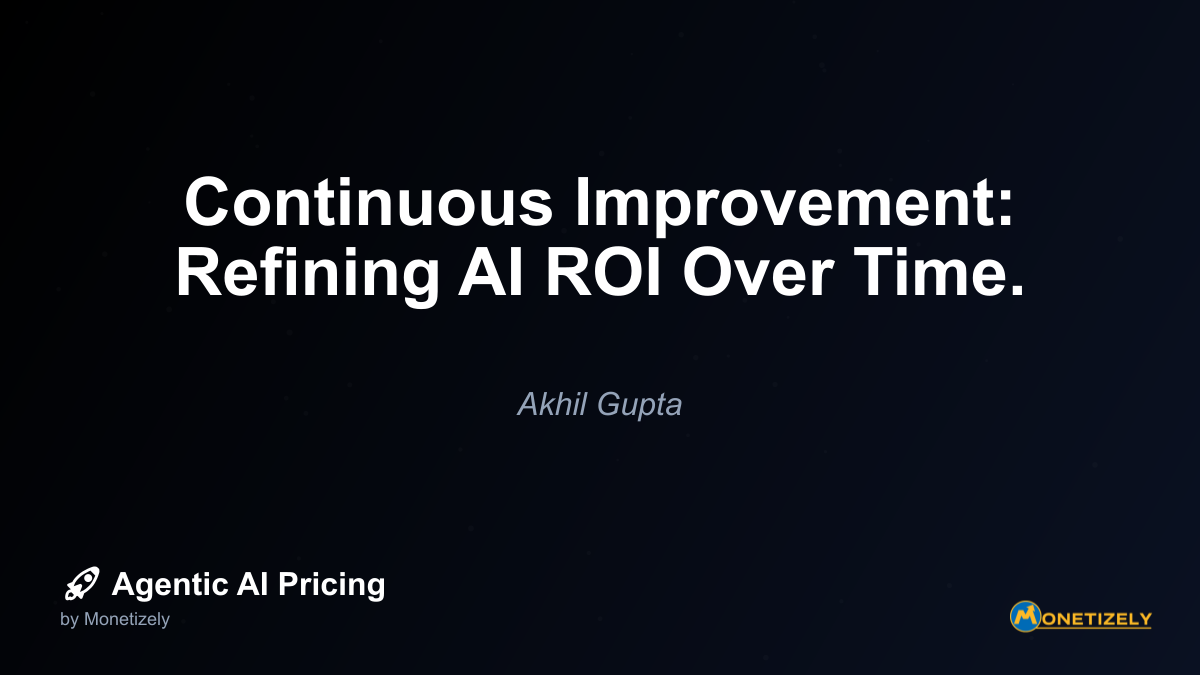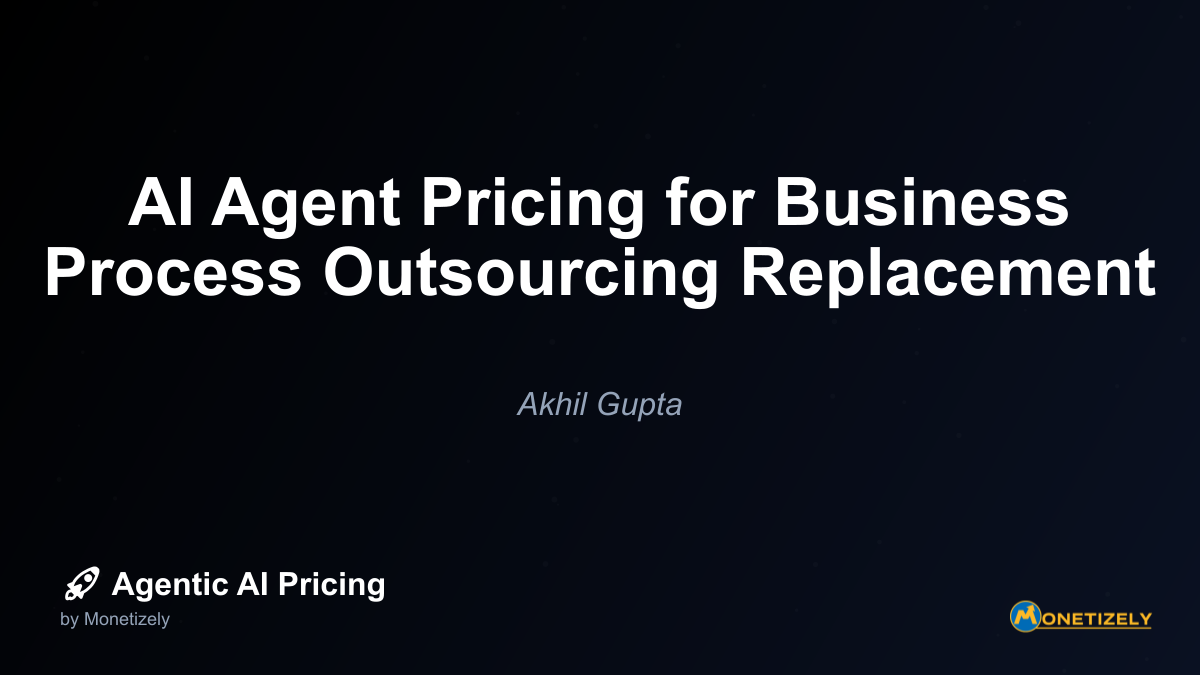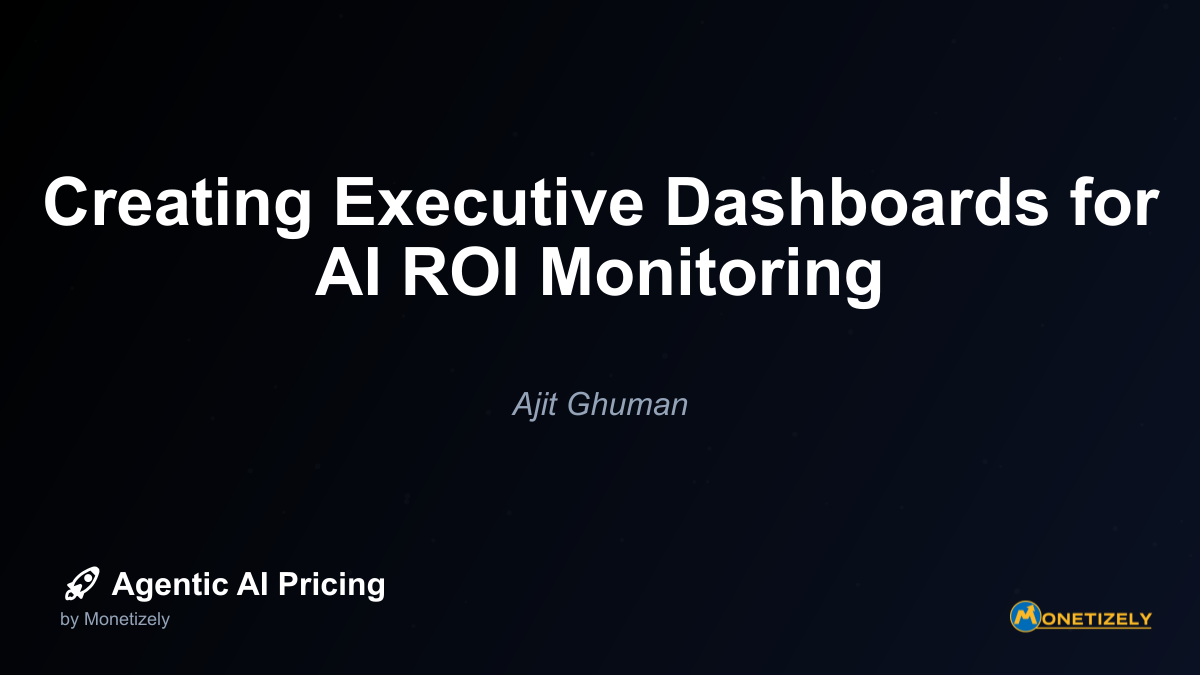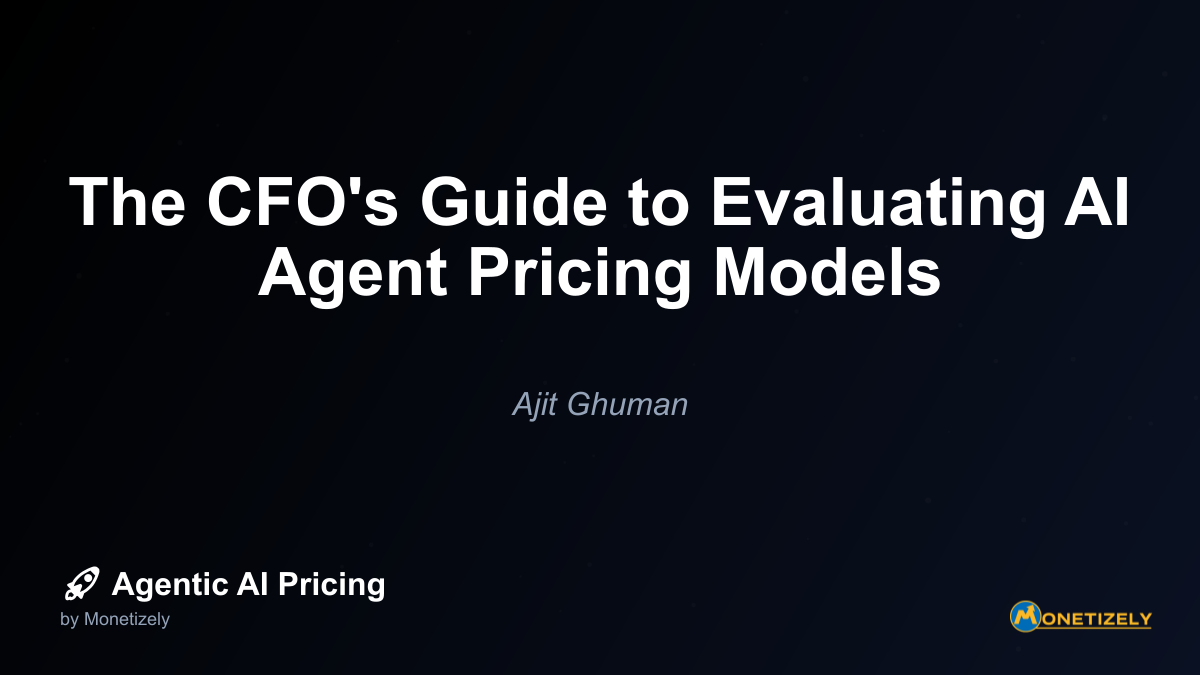· Akhil Gupta · ROI and Value · 10 min read
Continuous Improvement: Refining AI ROI Over Time.
AI and SaaS Pricing Masterclass
Learn the art of strategic pricing directly from industry experts. Our comprehensive course provides frameworks and methodologies for optimizing your pricing strategy in the evolving AI landscape. Earn a professional certification that can be imported directly to your LinkedIn profile.

Achieving sustainable ROI from AI investments requires ongoing attention and refinement. Organizations that treat AI implementation as a one-time project often miss opportunities to maximize value as technologies evolve and business needs change. The most successful AI adopters establish frameworks for continuous improvement, allowing them to systematically enhance performance, expand capabilities, and adapt to emerging challenges.
Why Continuous Improvement Matters for AI ROI
The initial deployment of an AI system represents just the beginning of its value journey. Unlike traditional software with fixed functionality, AI solutions possess unique characteristics that make continuous improvement essential:
Learning capabilities: AI systems improve with more data and feedback, creating opportunities to enhance performance over time.
Evolving business contexts: As market conditions and organizational priorities shift, AI applications must adapt to remain aligned with business objectives.
Technological advancements: The rapid pace of AI innovation means newer techniques, models, and approaches regularly emerge that can boost performance.
Changing user needs: As users become more familiar with AI capabilities, their requirements and usage patterns evolve, necessitating adjustments.
Organizations that establish structured approaches to continuous improvement can transform their AI investments from depreciating assets into appreciating ones, with ROI that compounds over time rather than diminishing.
Establishing Your AI Performance Baseline
Before you can improve AI ROI, you need clear visibility into current performance. Establishing comprehensive baselines serves multiple purposes:
Quantitative Performance Metrics
Start by documenting key performance indicators that directly relate to your AI system’s intended outcomes:
- Accuracy metrics: Precision, recall, F1 scores, or other domain-specific accuracy measures
- Efficiency gains: Time saved, throughput increases, or capacity improvements
- Financial impacts: Cost reductions, revenue increases, or margin improvements
- User engagement: Adoption rates, usage frequency, or satisfaction scores
Qualitative Assessment Factors
Complement quantitative metrics with qualitative insights:
- User feedback: Structured input from end-users about system strengths and limitations
- Process integration: How seamlessly the AI solution fits into existing workflows
- Edge case handling: How the system performs in unusual or challenging scenarios
- Organizational alignment: How well the AI solution supports strategic priorities
Documentation Best Practices
Create a performance dashboard that:
- Tracks metrics over time to visualize trends
- Segments performance by user groups, data types, or use cases
- Includes both technical and business outcomes
- Establishes clear thresholds for intervention
With robust baselines in place, you can identify improvement opportunities and measure progress against established benchmarks.
Implementing a Systematic Model Refinement Process
AI models form the core of your system’s capabilities, making them a primary focus for continuous improvement efforts. Establishing a structured approach to model refinement can yield significant ROI enhancements.
Regular Model Retraining Cycles
Most AI models benefit from periodic retraining with new data:
Scheduled retraining: Establish regular intervals for model updates based on data velocity and business cycles.
Trigger-based retraining: Define performance thresholds that automatically initiate retraining when metrics decline below acceptable levels.
Data-driven retraining: Monitor incoming data for distribution shifts that might indicate the need for model updates.
A leading financial services company implemented quarterly retraining cycles for their customer churn prediction model, resulting in a 12% improvement in prediction accuracy and an estimated $3.2 million in additional retained revenue annually.
Feature Engineering Optimization
Refining the inputs to your AI models can often yield substantial improvements:
- Feature selection review: Periodically reassess which variables contribute most to model performance.
- New data source integration: Explore additional data that might enhance predictive power.
- Transformation techniques: Experiment with different approaches to preparing data for model consumption.
Architectural Improvements
As AI techniques evolve, consider architectural enhancements:
- Model architecture updates: Evaluate whether newer model architectures might offer performance advantages.
- Ensemble approaches: Test whether combining multiple models improves results.
- Transfer learning: Leverage pre-trained models to enhance performance, particularly with limited domain-specific data.
Testing Framework
Implement a robust testing process to validate improvements:
- A/B testing: Compare new model versions against existing ones with real-world data.
- Shadow deployment: Run new models alongside production systems to evaluate performance without risk.
- Canary releases: Gradually roll out improvements to subsets of users to monitor impact.
Optimizing Data Quality and Quantity
The data feeding your AI systems fundamentally determines their performance potential. Continuous improvement in data management can substantially enhance ROI.
Data Quality Enhancement
Poor quality data undermines even the most sophisticated AI models. Implement processes to:
- Standardize data cleaning: Create consistent approaches to handling missing values, outliers, and inconsistencies.
- Implement data validation: Develop automated checks to identify potential quality issues before they affect models.
- Establish quality metrics: Define and track measures of data completeness, accuracy, and relevance.
Data Expansion Strategies
Increasing the volume and diversity of relevant data typically improves AI performance:
- Internal data integration: Connect previously siloed data sources within your organization.
- External data acquisition: Identify third-party data that might complement your existing information.
- Synthetic data generation: Create artificial data to address gaps or enhance training for rare scenarios.
A healthcare provider improved their diagnostic AI’s accuracy by 18% by implementing a structured data quality program and integrating previously unused imaging data from partner institutions.
Feedback Loop Implementation
Create mechanisms to continuously enhance data based on system performance:
- User feedback capture: Design interfaces that make it easy for users to flag incorrect outputs.
- Performance monitoring: Identify patterns in errors that might indicate data gaps.
- Active learning: Prioritize obtaining human labels for cases where the model shows low confidence.
Data Governance Evolution
As your AI systems mature, evolve your data governance approach:
- Documentation requirements: Maintain comprehensive metadata about data sources and transformations.
- Versioning systems: Track changes to datasets to enable rollback if needed.
- Compliance monitoring: Ensure ongoing adherence to regulatory requirements and ethical standards.
Enhancing User Experience and Adoption
The most technically impressive AI system delivers no value if users don’t embrace it. Continuous improvement in user experience directly impacts ROI by increasing adoption and effectiveness.
User Interface Refinement
Regular enhancements to how users interact with AI systems can dramatically improve adoption:
- Simplification: Continuously look for ways to reduce complexity and cognitive load.
- Personalization: Adapt interfaces to different user roles and experience levels.
- Contextual help: Provide guidance at the point of need rather than in separate documentation.
Transparency Improvements
Users trust and adopt systems they understand:
- Explanation capabilities: Enhance how the system communicates the rationale behind its outputs.
- Confidence indicators: Clearly show users how certain the system is about specific recommendations.
- Limitation acknowledgment: Be forthright about what the system cannot do or where it might struggle.
Training and Support Evolution
As users gain experience, their learning needs evolve:
- Tiered learning paths: Develop materials for beginners through advanced users.
- Peer learning networks: Create communities where users can share best practices.
- Usage analytics: Identify where users struggle and develop targeted assistance.
A manufacturing company increased adoption of their predictive maintenance AI from 65% to 94% of eligible technicians by implementing a user experience improvement program focused on simplifying the mobile interface and providing better explanations of maintenance recommendations.
Expanding Use Cases and Applications
One of the most powerful ways to improve AI ROI is to extend successful applications to new business areas, effectively amortizing development costs across multiple value streams.
Horizontal Expansion
Look for opportunities to apply existing AI capabilities to adjacent business processes:
- Similar process identification: Find processes with comparable patterns or requirements.
- Capability mapping: Document core AI capabilities and systematically evaluate where else they might apply.
- Quick-win identification: Prioritize extensions that require minimal adaptation for maximum impact.
Vertical Enhancement
Deepen AI involvement in existing processes:
- Automation expansion: Identify manual steps surrounding AI processes that could be automated.
- Decision scope increase: Gradually expand the types of decisions the AI system supports.
- Integration deepening: Connect AI systems more comprehensively with surrounding business systems.
Cross-Functional Collaboration
Foster partnerships across organizational boundaries:
- Knowledge sharing sessions: Create forums where successful AI teams can share insights with other departments.
- Joint opportunity assessment: Bring together AI experts and business units to identify new applications.
- Resource sharing: Develop models for sharing AI resources and expertise across business units.
A retail organization initially deployed an AI demand forecasting system for inventory management, then expanded it to inform staffing decisions, marketing campaign timing, and eventually supplier negotiations - increasing their total ROI by 340% compared to the original use case alone.
Measuring and Communicating Improvement Impact
Continuous improvement efforts must themselves be measured to ensure they deliver value and to maintain organizational support.
ROI Reassessment Framework
Develop a structured approach to periodically reevaluate ROI:
- Value tracking: Document both planned and unexpected benefits that emerge.
- Cost monitoring: Track ongoing investments in maintenance and improvement.
- Comparative analysis: Measure performance against both original baselines and industry benchmarks.
Impact Attribution Methods
Implement approaches to connect improvements to business outcomes:
- Controlled experiments: When possible, use A/B testing to isolate the impact of specific changes.
- Counterfactual analysis: Estimate what would have happened without improvements.
- Stakeholder validation: Engage business owners to verify and quantify observed benefits.
Communication Strategies
Develop effective ways to share improvement successes:
- Executive dashboards: Create visual representations of key improvement metrics for leadership.
- Success stories: Document specific examples where improvements created tangible value.
- Periodic reviews: Schedule regular sessions to share progress with stakeholders.
A financial institution implemented quarterly AI performance reviews with business stakeholders, helping them identify $4.2 million in additional cost savings opportunities from their fraud detection system that weren’t captured in the original ROI calculations.
Building an Organizational Culture of AI Improvement
Sustainable ROI enhancement requires embedding continuous improvement into organizational culture and processes.
Governance Structures
Establish frameworks that support ongoing enhancement:
- AI oversight committees: Create cross-functional groups responsible for monitoring and improving AI performance.
- Review cadences: Implement regular cycles for evaluating improvement opportunities.
- Resource allocation models: Develop approaches for funding ongoing improvement activities.
Skill Development
Invest in building capabilities that support continuous improvement:
- Training programs: Develop internal expertise in AI evaluation and enhancement.
- Career paths: Create advancement opportunities for specialists in AI optimization.
- Knowledge management: Implement systems to capture and share improvement best practices.
Incentive Alignment
Ensure organizational incentives support continuous improvement:
- Performance metrics: Include AI enhancement goals in relevant performance evaluations.
- Recognition programs: Celebrate successful improvement initiatives.
- Budget structures: Create dedicated funding for improvement activities rather than treating them as overhead.
A healthcare system established a dedicated “AI Excellence Team” with representation from data science, clinical staff, and operations. This team implemented a structured improvement program that increased the ROI of their diagnostic imaging AI by 27% annually for three consecutive years.
Navigating Common Challenges in AI Improvement
Organizations frequently encounter obstacles when implementing continuous improvement for AI systems. Anticipating and addressing these challenges proactively can maintain momentum.
Performance Plateaus
When improvements seem to stall:
- Reassess fundamentals: Return to basic questions about data quality and problem formulation.
- Seek external perspectives: Engage consultants or academic partners for fresh insights.
- Consider transformative approaches: Sometimes incremental improvement reaches limits, requiring more fundamental changes.
Resource Constraints
When improvement competes with other priorities:
- ROI-based prioritization: Focus on improvements with the clearest financial justification.
- Efficiency techniques: Implement approaches like automated testing to reduce improvement costs.
- Staged implementation: Break large improvements into smaller, more manageable components.
Organizational Resistance
When stakeholders resist ongoing changes:
- Change management: Apply structured approaches to help users adapt to evolving systems.
- Involvement strategies: Engage resistant stakeholders in the improvement process.
- Value demonstration: Clearly connect improvements to outcomes stakeholders care about.
A retail company overcame initial resistance to their continuous improvement program by creating a “suggestion portal” where front-line employees could submit ideas for AI enhancements, resulting in several high-impact improvements and dramatically increased buy-in.
Conclusion: The Compounding Value of Continuous AI Improvement
Organizations that view AI implementation as a one-time project leave significant value unrealized. Those that establish disciplined approaches to continuous improvement can achieve compounding returns that substantially exceed initial projections.
Effective continuous improvement isn’t just about technical refinement—it encompasses data quality enhancement, user experience optimization, use case expansion, and cultural development. Organizations that excel in these areas transform AI from a static investment into a dynamic capability that appreciates rather than depreciates over time.
As you develop your approach to AI continuous improvement:
Start by establishing comprehensive performance baselines that include both technical and business metrics.
Implement structured processes for model refinement, data enhancement, and user experience optimization.
Look beyond initial use cases to find opportunities for expansion that leverage existing investments.
Measure and communicate the impact of improvements to maintain organizational support.
Build governance structures and cultural elements that sustain improvement efforts.
The difference between organizations that achieve exceptional AI ROI and those that struggle often comes down not to their initial implementation, but to their commitment to continuous improvement in the months and years that follow. By treating your AI systems as evolving assets requiring ongoing refinement, you position your organization to capture maximum value as both the technology and your business continue to evolve.
Co-Founder & COO
Akhil is an Engineering leader with over 16+ years of experience in building, managing and scaling web-scale, high throughput enterprise applications and teams. He has worked with and led technology teams at FabAlley, BuildSupply and Healthians. He is a graduate from Delhi College of Engineering and UC Berkeley certified CTO.
Pricing Strategy Audit
Let our experts analyze your current pricing strategy and identify opportunities for improvement. Our data-driven assessment will help you unlock untapped revenue potential and optimize your AI pricing approach.




